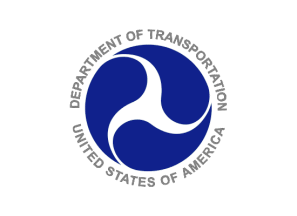Today, the Biden-Harris Administration announced it is advancing the Gateway Hudson River Tunnel project to the next phase in the Federal Transit Administration’s (FTA) Capital Investment Grants (CIG) program, a critical step towards unlocking up to $6.88 billion in funding from this program. The project is a long-overdue investment to construct a new Hudson River Tunnel between New York and New Jersey and rehabilitate the 110-year old rail tunnel that carries 200,000 passenger trips per day on New Jersey Transit and Amtrak along the Northeast Corridor.
Today’s announcement officially begins the Engineering phase of the project and allows the Gateway Development Commission (GDC) to begin early actions like utility relocations, critical real estate acquisitions, demolition, procurement of specialized equipment and materials, and further design. GDC also may request pre-award authority from FTA to conduct specific construction activities. If the project sponsor meets all CIG statutory requirements of the Engineering phase, such as securing non-federal matching funds, the Administration will consider awarding a Full Funding Grant Agreement for up to $6.88 billion for the Gateway Hudson River Tunnel project. This would represent the single largest commitment under the CIG program to date, and potentially the largest single allocation under the Bipartisan Infrastructure Law. Funding available for the project is made possible by President Biden’s Bipartisan Infrastructure Law, a key part of his Investing in America agenda that is growing the American economy from the bottom up and middle-out— by rebuilding our nation’s infrastructure, driving over $500 billion in private sector investments in the United States, and creating good-paying jobs.
This latest step follows major progress in 2023 on the project after years of stalled efforts. Other recent milestones under the Biden-Harris Administration include:
- In February 2021, the U.S. Department of Transportation reversed a Trump Administration policy decision that limited the treatment of federal loans as local matching funds for CIG projects. That policy had blocked the Hudson River Tunnel project from being considered for a CIG grant agreement. The Department restored earlier policy that since federal loans will be repaid by state and local revenue, they are considered to be local matching funds.
- In May 2021, the Federal Railroad Administration and FTA jointly issued the Final Environmental Impact Statement (EIS) and the Record of Decision (ROD) for the Hudson River Tunnel project. The permitting process was initiated in May 2016 – five years prior – but was delayed during the Trump Administration.
- On January 20, 2022, FTA updated the CIG rating for the Hudson River Tunnel project to Medium-High after project sponsors improved it. A project needs to be rated Medium or better to qualify for approval into the Engineering Phase of the CIG program; the project had previously been rated Medium-Low by the Trump Administration, blocking it from progressing.
- In late January 2023, President Biden announced a $292 million Mega grant to Amtrak for Hudson Yards Concrete Casing, Section 3, part of a $649 million early phase project that will complete the final section of concrete casing intended to preserve future right-of-way for the new passenger rail tunnel under the Hudson River. The concrete casing protects the path of the new tunnel from Penn Station to the Hudson River’s edge. If this casing were not built now, the foundations from the new Hudson Yards development would likely impede the path of the tunnel and make the project extremely difficult. The funding is made possible from the Bipartisan Infrastructure Law’s new National Infrastructure Project Assistance discretionary grant program (Mega).
- In May 2023, the FY 2024 President’s Budget included the Gateway Hudson River Tunnel project on its list of projects recommended for CIG funding, based on the expectation that the project will complete all necessary steps in the Engineering Phase and be ready to receive a Full Funding Grant Agreement during FY 2024.
- Last week, the GDC was awarded $25 million from the U.S. Department of Transportation’s Rebuilding America’s Infrastructure with Sustainability and Equity (RAISE) program for the Tonnelle Avenue Bridge and utility relocation project in North Bergen, New Jersey, which will be the opening of the tunnel on the New Jersey side. The project will fund the utility relocation and construction of a new approximately 100-foot road bridge to carry Tonnelle Avenue over a new railroad right-of-way for the new Hudson River Tunnel in North Bergen. Safety will be improved for pedestrians crossing Tonnelle Avenue with a new signalized intersection. Tonnelle Avenue provides freight trucks access to local communities, which will improve movement of goods to those communities.
Today’s CIG announcement is one of several milestones for the project expected this year and a significant step for the Gateway Hudson River Tunnel Project. The project is also eligible for other federal grant and loan programs, including the Federal Railroad Administration’s Federal-State Partnership for Intercity Passenger Rail program, which will announce project selections later this year.
Hudson Tunnel Project
The overall Gateway Hudson River Tunnel project is a $17.18 billion investment that will improve resilience, reliability, and redundancy for New Jersey Transit (NJ Transit) and the National Railroad Passenger Corporation (Amtrak) train service between New York and New Jersey. The project will reduce commute times for NJ Transit riders, enhance Amtrak reliability on the Northeast Corridor (NEC), and support the northeast regional economy. Amtrak expects the Hudson River Tunnel project will result in 72,000 direct and indirect jobs during construction with union partnerships for job training.
The existing North River Tunnel is over 100 years old and opened for service in 1910. Built to early 20th century standards, it is the only passenger rail tunnel connecting New York and New Jersey and facilitates more than 200,000 passenger trips per weekday on more than 450 Amtrak and NJ Transit trains servicing New York Penn Station. The existing tunnel has two tubes with one track each and has reached its full capacity of 24 trains per hour, causing bottlenecks and delays. When one track goes out of service for any reason, trains have to wait to go through the other working tube. This creates bottlenecks and delays for NJ Transit commuters and Amtrak travelers that cascade throughout the Northeast Corridor. Beyond its age and regular maintenance, in 2012, millions of gallons of salt water flooded into the tunnel during Superstorm Sandy. Even today, the remnants of seawater that entered the tunnel in 2012 continue to harm the concrete, steel, tracks and third rail, signaling, and electrical components within the tunnel.
To address those challenges, the Hudson River Tunnel Project will rehabilitate the old North River Tunnel; build a new tunnel beneath the Palisades, the Hudson River, and the waterfront area in Manhattan; construct a new surface alignment from Secaucus to the new tunnel portal in North Bergen; construct ventilation shafts and fan plants in New Jersey and New York; and make track modifications near Penn Station. When the project is done, the redundant capacity provided by a second tunnel will mean fewer delays and less risk for catastrophic disruption.
The Hudson River Tunnel project is part of the larger Gateway Program which envisions expanding and rebuilding the rail line between Newark, New Jersey and New York City through a number of projects, including the new Portal North Bridge, which broke ground last year and is supported by over $1 billion in federal transportation funding.
President Biden’s Bipartisan Infrastructure Law makes the largest investment in passenger rail since the creation of Amtrak, with a $66 billion investment in rail. After waiting years for new federal funding, 2023 will be a year in which major rail projects along the 450-mile Northeast Corridor between Washington, DC, and Boston, receive their first significant funding. The Bipartisan Infrastructure Law also includes over $90 billion for transit, the largest amount for public transit in history.
###
Official news published at https://www.whitehouse.gov/briefing-room/statements-releases/2023/07/06/fact-sheet-biden-harris-administration-advances-gateway-hudson-river-tunnel-project/
The post FACT SHEET: Biden-Harris Administration Advances Gateway Hudson River Tunnel Project first appeared on Social Gov.




More Stories
Remarks by Vice President Harris at a Political Event
Remarks by APNSA Jake Sullivan in Fireside Chat at the Aspen Security Forum
Statement by President Joe Biden on the Sentencing of Wrongfully Detained American Evan Gershkovich